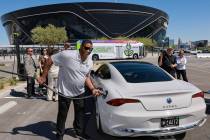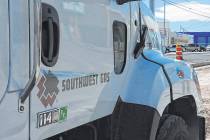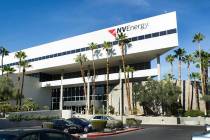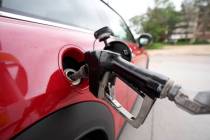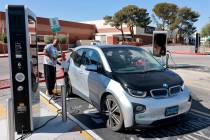It’s all about the battery
During the next five years, it is estimated that U.S. consumers will eventually be able to choose from 150 models of new cars, trucks or SUVs when deciding whether to buy hybrid electric, plug-in hybrid electric or pure electric vehicle.
Many of these vehicles will be manufactured in the United States. But what about the battery packs? Will the U.S. economy just be swapping dependence on imported crude oil for dependence on imported battery packs?
Although much of the advanced battery technology available in laptop computers, cell phones and portable electronics was invented and developed in the United States, almost none of it is manufactured here. This is particularly true of advanced battery cells that employ nickel-metal hydride and lithium-ion chemistries.
Stanford and Iris Ovshinsky first began improving the efficiency of nickel-metal hydride battery technology during the 1980s. The husband-and-wife research team started a company called ECD Ovonics that focused its development efforts to create a battery with enough power to drive an electric car. They were aided in this effort by a grant from the U.S. Advanced Battery Consortium that was primarily funded by U.S. taxpayers during the 1990s. NiMH battery chemistry showed great potential to double the range of traditional lead-sulfuric acid batteries for electric cars as the technology was already showing success in smaller consumer product applications. However, there were many engineering problems yet to solve when scaling up the design to produce larger cells that could drive heavy automobiles in vibrating, dynamic environments.
During the late 1990s, ECD Ovonics licensed its new technologies to battery cell manufacturers in Japan, including Panasonic and Sanyo. These companies continued to refine the manufacturing process for building efficient nickel-metal hydride battery cells and battery packs that could power electric cars, trucks and SUVs. Toyota Motor Co. adapted this battery technology into its new Prius sedan to enable its patented Synergy hybrid gasoline/electric drive system and began shipping hybrid cars into the U.S. market during 2000. Last month, Toyota announced that it had sold 2 million hybrid Synergy vehicles since production began in 1997. More than 1 million of those vehicles have been sold to the North American market. Japanese battery manufacturer Sanyo also sells its nickel-metal hydride battery packs to Ford Motor Co. for use in the Escape Hybrid SUV, as well as to other international automotive companies. Sanyo is now striving to be the primary supplier to 40 percent of the worldwide hybrid automotive market during the near future.
Today, lithium-ion battery chemistries are at the same stage of development as nickel-metal hydride technologies were just 10 years ago. Li-ion battery technology can potentially quadruple the range for electric vehicle applications compared to traditional lead-acid batteries as well as provide a much longer recharge cycle life, potentially exceeding 10 years of daily usage. Dr. John Goodenough, a researcher in the materials science and engineering department at the University of Texas in Austin, is credited with first developing and patenting successful lithium-ion battery cell chemistries based on lithium cobalt oxide and then lithium iron phosphate technologies. The University of Texas licensed these patents to battery cell manufacturers in Canada, Asia and Europe.
At the Massachussetts Institute of Technology, research scientist Dr. Yet-Ming Chiang improved on Dr. Goodenough's lithium iron phosphate battery chemistry design by adding nanoscale manufacturing processes that allowed energy to travel more quickly and powerfully through the battery cell without dissipating as much heat. Ric Fulop later partnered with Chiang to create A123 Systems as a commercial company that could mass produce his improved battery cell design. The company's first major customer was Black & Decker, which found that the lithium iron phosphate battery cells were ideal to create lightweight rechargeable battery packs for the company's DeWALT power tool product line. The battery cells inside the power tool battery packs were not much larger than ordinary flashlight batteries but could provide four times the power and energy capacity.
Electric drag racing enthusiasts started tinkering with these cells to see if they could wire together enough of them to drive an electric vehicle. National Electric Drag Racing Association co-founder Bill Dube discovered a technique for welding together 1,200 cells to form a battery pack that powered two electric motors on a home-built motorcycle that he named the Killacycle. He and driver Scotty Pollacheck started astounding the motorcycle racing community by eventually reaching speeds exceeding 170 mph on NHRA quarter-mile drag strips while accelerating from zero to 60 in less than 1 second.
A123 Systems refocused its business to develop cells for electric vehicles and recently committed to producing its automotive batteries in Michigan in order to be closer to the U.S. automotive industry. The company signed an agreement with Chrysler to provide battery packs for the Dodge Circuit electric sports car, as well as Chrysler's ENVI product line of plug-in hybrid electric vehicles. A123 Systems has also received $10 million in tax credits from Michigan to help establish its manufacturing infrastructure within the state. While continuing to seek investment capital, it received a boost when General Electric bought part of the company.
The Obama administration plans to rebuild the U.S. economy by speeding up the development of an advanced battery manufacturing and distribution infrastructure within the United States. In August 2009, the Department of Energy awarded $2.4 billion in government grants to 43 companies that were ready to help mass produce advanced battery technologies within the United States as part of the ARRA 2009 stimulus package. A123 Systems received $249 million to help scale up its manufacturing and support operations.
On Sept. 24, A123 Systems issued an initial public offering for 1 million shares of common stock on the NASDAQ exchange priced at $13.50 per share. The opening price was soon bid up 50 percent in trading during the day.
However, A123 Systems and other U.S. battery companies will face strong competition globally from established international leaders like Panasonic, Sanyo and GS Yuasa in Japan; Samsung and LG Chem in South Korea; BYD in China; and Saft in France.
Stan Hanel has worked in the electronics industry for more than 30 years and is a long-time member of the Electric Auto Association and the Las Vegas Electric Vehicle Association. Hanel writes and edits for EAA's "Current Events" and LVEVA's "Watts Happening" newletters. Contact him at stanhanel@aol.com.












